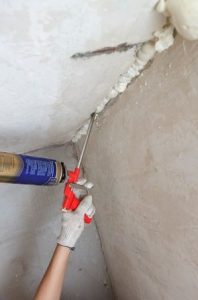 Making sure a home is energy efficient is not just good for the environment, but it is also good for the budget. Wasted energy – whether electricity, water, gas or oil – has an environmental and financial impact. Many new homes have plumbing along interior walls because it is more efficient, but keeping energy efficient with plumbing along exterior walls is also possible.
Making sure a home is energy efficient is not just good for the environment, but it is also good for the budget. Wasted energy – whether electricity, water, gas or oil – has an environmental and financial impact. Many new homes have plumbing along interior walls because it is more efficient, but keeping energy efficient with plumbing along exterior walls is also possible.
Homes in California are required to have pipes insulated in most cases. There are, however, a few exceptions to this rule for cases where the pipes are adequately insulated by existing wall or ceiling insulation.
Insulating around pipes in existing homes can reduce energy loss. This will also make it less likely that pipes will freeze during cold weather. Pipe insulation is available to fit a variety of pipe sizes and shapes. This insulation is cylindrical in shape and has a slit along the side to make fitting it over a pipe easy. While the R-value of pipe insulation is low, it does help to reduce heat loss and can help keep condensation that may form on pipes away from wall insulation. Pipe insulation is inexpensive and simple to install on any pipes that are accessible, and SFGate recommends pipe insulation as the first step, even if you’re planning on using other insulation as well.
Spray foam insulation is sprayed into the wall cavity as a liquid, but hardens into solid foam. This insulation is very effective and easy to apply, but may cost more than other options, depending on the area to be insulated and the amount of material you need.
Fiberglass insulation is the most common type of home insulation. Fiberglass insulation can be split to insulate both sides of a pipe that runs within a wall, ceiling or floor.
Blown-in insulation is an option for existing homes where the walls are already closed in. This insulation is blown into the wall cavities through a series of holes that are drilled into the wall. Unfortunately, blown-in insulation is difficult to get around horizontal pipes and so may be of limited value for insulating pipes on exterior walls in existing structures.
California also has requirements for in-wall insulation, as well as exceptions that may apply for attics and crawlspace plumbing, and recently discussed them in the July-August issue of Blueprint, published by the California Energy Commission’s Efficiency Division. Check out the latest issue online.
At Rick’s Energy Solutions, we work with homeowners in Northern California to conduct home energy audits to identify areas where energy efficiency could be improved. We also can work with property owners to prepare and submit California Title 24 energy conservation and green building compliance documents for new construction. To learn more about our services or to schedule an energy audit of your home, call us today at 707-578-5380.
